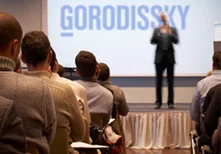The Chamber of Patent Disputes considers the similarity of two marks
1 May 2018A combined designation was filed as trade mark application no 2016706326 in respect of services in Class 42 of the International Classification of Goods and Services (ICGS). The mark is shown below: |
 |
The patent office refused registration because the claimed designation is confusingly similar to trade mark no 489580 with an earlier priority date in the name of another person, also in respect of Class 42. The mark is shown below: |
 |
The applicant did not agree with the decision of the examiner and appealed it. He argued that even though both designations are claimed for services in Class 42, those designations are used for individualisation of different services and both designations are visually different. As a result, they produce a different visual impression. The applicant also argued that the claimed and cited designations are different phonetically.
However, the Chamber of Patent Disputes refused the appeal and upheld the decision of the patent office in force.
According to the Chamber of Patent Disputes, similarity between both designations was established on the basis of the similar phonetics of the word elements ONE FACTOR and UNOFACTOR which have identical end parts (FACTOR) and close sounds (O – U – E) and identical sounds (N-N) in the initial part of the designation. Visual separation in the claimed designation in two parts, i.e. ONE and FACTOR, does not affect phonetic perception and does not modify phonetic similarity to the word Unofactor.
The compared word elements consist of verbal units of the English language (ONE) and Spanish/Italian languages (UNO) which have the same meaning and are translated into Russian in the same way. The word FACTOR has the same meaning and is easily understood in Russian even without translation (in fact, it is transliterated and has the same meaning). Accordingly, likeness of concepts and ideas imparted by these designations determine semantic similarity of the compared word elements.
Taking into consideration phonetic and semantic similarity, it should be noted that visual differences between these designations do not affect to any significant degree the conclusion about their similarity.
The Chamber of Patent Disputes did not agree with the assertion of the appellant who argued that there is considerable visual difference between the compared designations because writing the compared parts in capital letters and in Latin characters just enhances visual similarity.
The services in Class 42 claimed in the designation and in the cited trade mark are in the same field. Those services concern scientific research and development of computer technologies and information/communication services which can be used in any field.
Finally, the claimed designation and the cited trade mark in Class 42 elicit like associations. Despite some differences, it can be concluded that they are confusingly similar.
To access this website, we request that you read and accept the Terms of Use.










